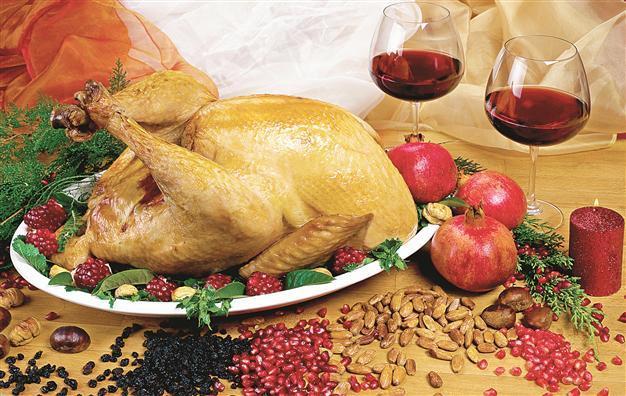Talking Turkey
AYLİN ÖNEY TAN ISTANBUL - Hürriyet Daily News

Turkey has become the choice dish on New Year’s tables in modern Turkey.
There’s something in “Turkey” that makes it festive...the bird as well as the country.Why the bird came to be named after the country has been a mystery for quite some time. Thankfully, historian Giancarlo Casale has written a hilarious article resolving the question.
Turkey, after all, is a New World bird. That is why it is mandatory on the Thanksgiving table, being the only edible fowl that is truly American.
Then, of course, there is also the gratitude factor. The bird saved the first pilgrims from starvation during their first harsh winter in their new world. Benjamin Franklin was such a fan of wild turkey that he even campaigned to make it the national symbol. Apparently the bald eagle had more supporters, who probably thought that eating the national symbol would not be very appropriate.
Turkey also adorns most Christmas tables, in particular the British one, and strangely, it has become the choice dish on New Year’s tables in modern Turkey.
Turkish turkey is stuffed with a fragrant rice pilaf with chestnuts, pine nuts, currants and tiny liver morsels, which transform it into a genuinely oriental dish. Even the Turkish name for turkey is somewhat oriental; that is, “hindi,” meaning from India. Here comes the puzzle: In India there is no such bird as a turkey. Although chicken is much loved, there is no such thing as turkey tikka.
Many other languages also name turkey after India; “dinde” in French, meaning from India, “indjushka” in Russian and “inyczka” in Polish to name a few. But the country referred to was not the India in Asia, but the New India, or West Indies, the first name for America. So, at least, some countries managed to get the origins of the bird right, even if they got the name of the continent wrong.
But how did the bird become associated with the country of Turkey? Well, a country named Turkey did not even exist back then. The Republic of Turkey was established in 1923, more than a good four centuries after the first bird was put on table. However, the Ottoman Empire was referred to as the land of Turks, so anything coming from the exotic lands of the east was called Turkish. The African bird Guinea Fowl was no exception. Attributing a Moorish connection to this tasty African treat, the British called it turkey-cock; and eventually just turkey.
When the first pilgrims from Britain tasted the American bird, they assumed that it was a grander version of the African one, calling it, again, turkey-cock.
Perhaps that was appropriate, as the bird is popularly associated with festivity. Anyone living in Turkey knows that there is something festive about this country. If that sounds far-fetched, at least all would agree that it never has a dull moment!
Bite of the week
Fork of the Week: If you desire a truly Turkish-style stuffed turkey for Christmas or New Year, try your luck at a delicatessen. Merkez Şarküteri in Levent, İstanbul, makes a truly Turkish turkey, stuffed with chestnut pilaf.
Cork of the Week: Some pair Turkey with white wine, some prefer a delicate red. I suggest picking the grape and then choose variations. Kalecik Karası, a delicate Anatolian red grape, works like a joker, producing astonishing whites, delicious rosés and velvety reds. Terra Kayra has produced all three; apart from the usual red Kalecik Karası, their white and rosé Kaleciks are truly authentic and exciting. For a festive bubbly, pick Yaşasın by Vinkara, the first “méthode champenoise” sparkle of Turkey, produced again from Kalecik Karası.
















